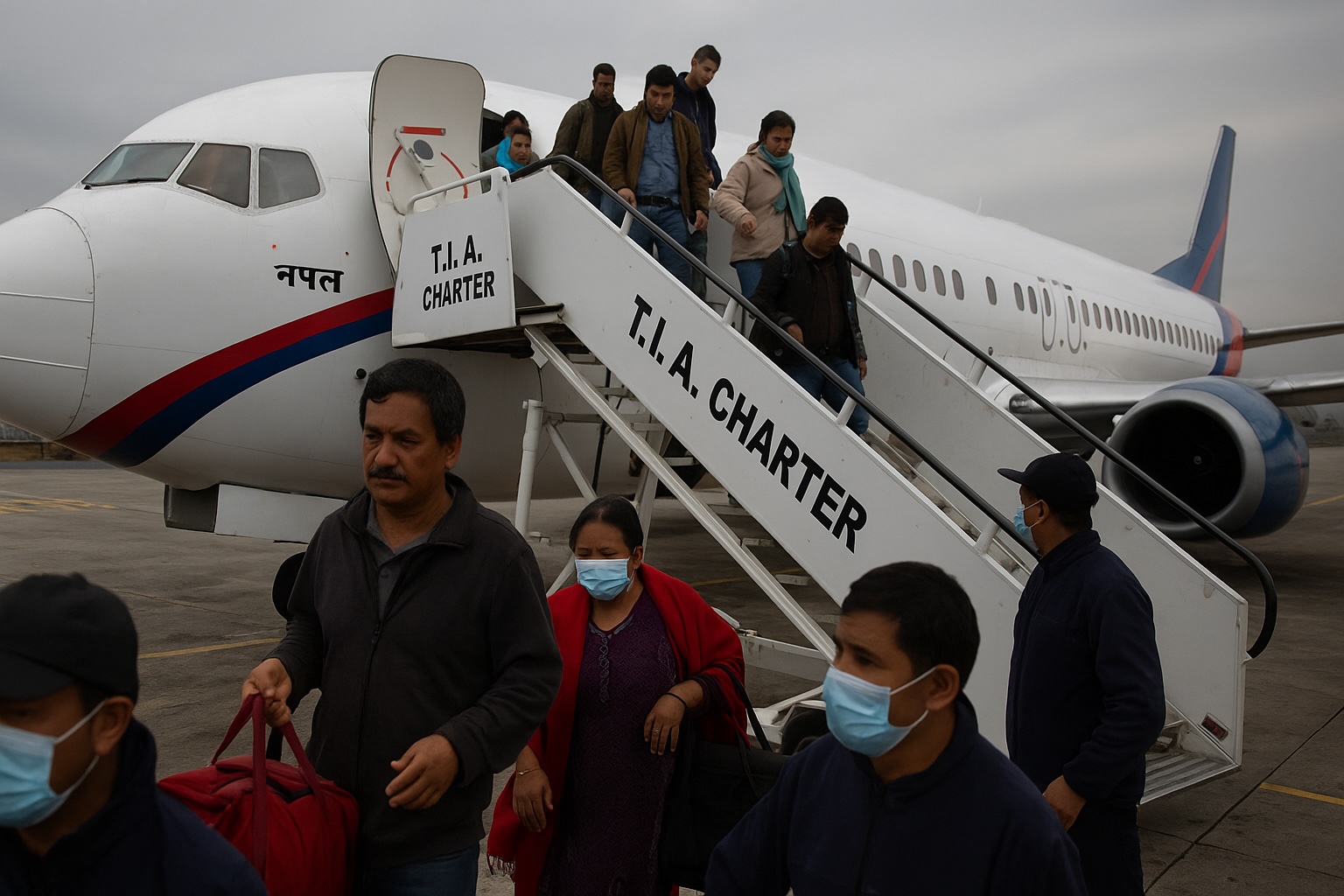7,000 Nepalese Ordered to Pack Their Bags — Trump Ends Their Protection

In a move causing widespread anxiety among the Nepali diaspora in the United States, the administration under President Donald Trump has officially announced the termination of Temporary Protected Status (TPS) for thousands of Nepalese nationals who had been granted protection following the devastating 2015 earthquake.
The decision, made public by the U.S. Department of Homeland Security, cited Nepal’s “notable improvements in environmental disaster preparedness” and “substantial reconstruction” as justification for ending the program. The department concluded that living conditions in Nepal have stabilized enough to allow for the safe return of its nationals.
Approximately 12,700 Nepalese individuals currently hold TPS, a designation that had protected them from deportation and allowed them to work legally in the U.S. Nearly 5,500 of them have obtained lawful permanent residency. However, the remaining 7,000 now face a fast-approaching deadline: leave the country or adjust their immigration status by August 5, 2025, or risk forced removal.
This announcement aligns with broader efforts by the current administration to dismantle various humanitarian protections. In recent months, similar decisions have impacted nationals from Haiti, Afghanistan, and other countries previously under TPS. A reimposed travel ban affecting citizens of 12 nations has further heightened concern across immigrant communities.
For the thousands of Nepalese TPS holders—many of whom have lived in the U.S. for years—the revocation feels abrupt and deeply unsettling. “We have been working, paying taxes, contributing to society. Now we are told to leave everything behind,” shared one individual from the Nepali community, choosing to remain anonymous due to legal concerns.
Beyond TPS holders, international students from Nepal are also feeling the ripple effects of tightened immigration policies. The United States has long been among the top destinations for Nepali students, but recent visa restrictions have led to mounting uncertainty. Education consultants report that many students who had planned to pursue higher education in the U.S. are now reconsidering and exploring options in other countries.
“This isn’t just a policy change—it’s a disruption of long-held dreams,” said an education advisor based in Kathmandu. “Many families have invested years preparing for this path. Now, it’s all uncertain.”
Also affected are thousands of Bhutanese Nepalis, who resettled in the U.S. after being expelled from Bhutan in the 1990s. Having fled ethnic persecution, they had built new lives in America—particularly in areas like Ohio and Pennsylvania. But recent deportations have left this community feeling insecure once again. Several individuals sent back were reportedly denied entry by Bhutanese authorities and eventually ended up in refugee camps in Nepal, via India.
One elected official of Bhutanese Nepali origin described receiving multiple calls daily from concerned community members. “People are frightened,” he said. “They want to know what’s next, and there are no clear answers.”
The policy shift reflects a broader ideological posture that prioritizes enforcement over humanitarian consideration. While the official stance emphasizes national security and recovery benchmarks in countries like Nepal, critics argue that the human cost of these decisions is being overlooked.
For the affected individuals and families, this isn’t merely a bureaucratic matter—it’s a disruption of lives painstakingly rebuilt after tragedy. Without legislative action or legal relief, thousands now face an uncertain future shaped by fear, forced return, and fractured communities.
The decision may fit within the larger immigration strategy, but for many, it marks the end of safety—and the beginning of an anxious search for belonging once again.




![From Kathmandu to the World: How Excel Students Are Winning Big [Admission Open]](https://nepalaaja.com/index.php/img/70194/medium/excel-college-info-eng-nep-2342.jpg)
